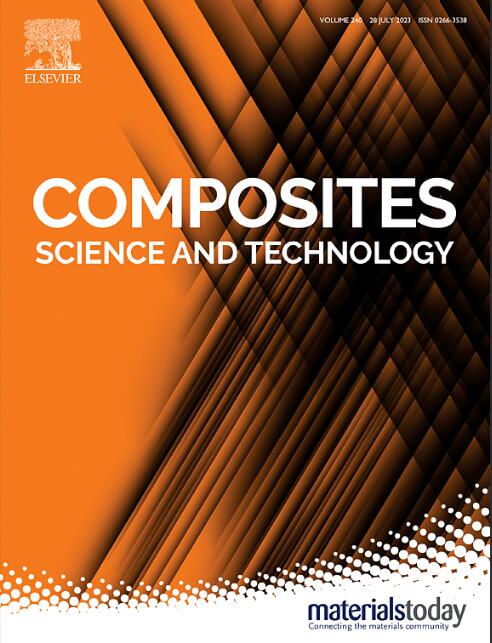Ultra-high strength and flame retardant carbon aerogel composites with efficient electromagnetic interference shielding and superior thermal insulation via nano-repairing route
IF 8.3
1区 材料科学
Q1 MATERIALS SCIENCE, COMPOSITES
引用次数: 0
Abstract
Carbon aerogel composites (CAs) have received numerous attention for protection of aircraft due to their unique properties. However, the shrinkage mismatch between rigid fibers and carbon sources during carbonization dramatically weakens the performance of CAs, and no significant breakthroughs have been made. We propose a vacuum impregnation assisted nano-repairing (VINR) strategy to fabricate crack-free carbon fiber reinforced carbon aerogel (Cf/CA) composites with high strength, electromagnetic interference shielding and thermal insulation. The cross-confined, overlapping nano-CA particles greatly limits the shrinkage of the carbon source, conferring excellent mechanical properties to Cf/CA, and its compressive strength and modulus reaches 3.93 MPa and 69.96 MPa in XY direction and 2.03 MPa and 40.67 MPa in Z direction, respectively, at 5 % strain. In addition, Cf/CA exhibits significant thermal insulation (0.054 W/(m·K) at 25 °C under air condition) and superior electromagnetic interference shielding properties (EMI SE is ∼48.52 dB at a thickness of ∼2 mm). Herein, the structurally optimized Cf/CA provides a promising solution for multi-effect protection for critical electronic devices of aircraft in special service environments.

通过纳米修复途径实现具有高效电磁干扰屏蔽和优异隔热性能的超高强度阻燃碳气凝胶复合材料
碳气凝胶复合材料(CA)因其独特的性能在飞机保护方面受到广泛关注。然而,碳化过程中刚性纤维与碳源之间的收缩不匹配极大地削弱了 CA 的性能,目前尚未取得重大突破。我们提出了一种真空浸渍辅助纳米修补(VINR)策略,用于制造具有高强度、电磁干扰屏蔽和隔热性能的无裂纹碳纤维增强碳气凝胶(Cf/CA)复合材料。在应变为 5% 时,Cf/CA 在 XY 方向的抗压强度和模量分别达到 3.93 兆帕和 69.96 兆帕,在 Z 方向的抗压强度和模量分别达到 2.03 兆帕和 40.67 兆帕。此外,Cf/CA 还具有显著的隔热性能(空气条件下 25 °C 时为 0.054 W/(m-K))和优异的电磁干扰屏蔽性能(厚度为 2 mm 时 EMI SE 为 48.52 dB)。因此,结构优化的 Cf/CA 为特殊服务环境下飞机关键电子设备的多效应保护提供了一种可行的解决方案。
本文章由计算机程序翻译,如有差异,请以英文原文为准。
求助全文
约1分钟内获得全文
求助全文
来源期刊

Composites Science and Technology
工程技术-材料科学:复合
CiteScore
16.20
自引率
9.90%
发文量
611
审稿时长
33 days
期刊介绍:
Composites Science and Technology publishes refereed original articles on the fundamental and applied science of engineering composites. The focus of this journal is on polymeric matrix composites with reinforcements/fillers ranging from nano- to macro-scale. CSTE encourages manuscripts reporting unique, innovative contributions to the physics, chemistry, materials science and applied mechanics aspects of advanced composites.
Besides traditional fiber reinforced composites, novel composites with significant potential for engineering applications are encouraged.
 求助内容:
求助内容: 应助结果提醒方式:
应助结果提醒方式:


